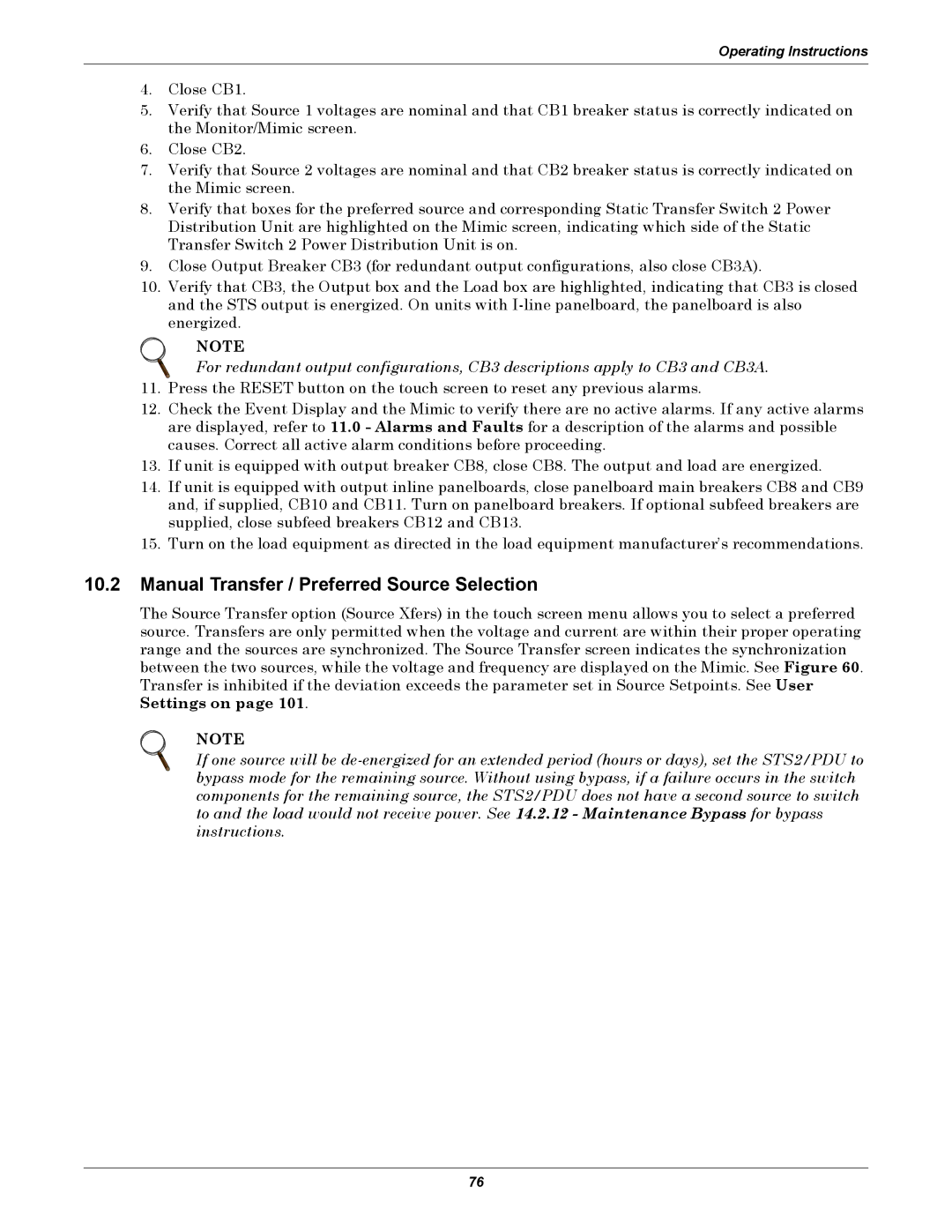
Operating Instructions
4.Close CB1.
5.Verify that Source 1 voltages are nominal and that CB1 breaker status is correctly indicated on the Monitor/Mimic screen.
6.Close CB2.
7.Verify that Source 2 voltages are nominal and that CB2 breaker status is correctly indicated on the Mimic screen.
8.Verify that boxes for the preferred source and corresponding Static Transfer Switch 2 Power Distribution Unit are highlighted on the Mimic screen, indicating which side of the Static Transfer Switch 2 Power Distribution Unit is on.
9.Close Output Breaker CB3 (for redundant output configurations, also close CB3A).
10.Verify that CB3, the Output box and the Load box are highlighted, indicating that CB3 is closed and the STS output is energized. On units with
NOTE
For redundant output configurations, CB3 descriptions apply to CB3 and CB3A.
11.Press the RESET button on the touch screen to reset any previous alarms.
12.Check the Event Display and the Mimic to verify there are no active alarms. If any active alarms are displayed, refer to 11.0 - Alarms and Faults for a description of the alarms and possible causes. Correct all active alarm conditions before proceeding.
13.If unit is equipped with output breaker CB8, close CB8. The output and load are energized.
14.If unit is equipped with output inline panelboards, close panelboard main breakers CB8 and CB9 and, if supplied, CB10 and CB11. Turn on panelboard breakers. If optional subfeed breakers are supplied, close subfeed breakers CB12 and CB13.
15.Turn on the load equipment as directed in the load equipment manufacturer’s recommendations.
10.2Manual Transfer / Preferred Source Selection
The Source Transfer option (Source Xfers) in the touch screen menu allows you to select a preferred source. Transfers are only permitted when the voltage and current are within their proper operating range and the sources are synchronized. The Source Transfer screen indicates the synchronization between the two sources, while the voltage and frequency are displayed on the Mimic. See Figure 60. Transfer is inhibited if the deviation exceeds the parameter set in Source Setpoints. See User Settings on page 101.
NOTE
If one source will be
76
